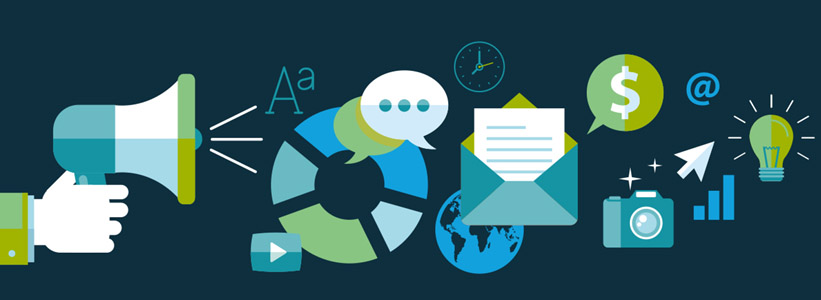As technology and demand have grown over the years, marketing itself has evolved into a much better perspective that almost…

5 Data-Driven Retention Marketing Tips
This is often referred to as Lifecycle or Loyalty Marketing that tends to keep customers engaged by simply delivering relevant content. And by doing so, it will increase the Customer Lifetime Value or what we often call CLV, in return of an overall value for your successful business. But in order to understand the overall value, you must also know what Retention Marketing means and its importance.
WHAT DO YOU MEAN BY RETENTION MARKETING?
Retention marketing is a new form of marketing that is becoming more and more prevalent in the e-commerce world. The focus of this school of marketing is to create engaged customers that return to your store to shop again. It is a shift in focusing only on the acquisition of countless new customers, to also focusing on the profitability of those you already have!
In short, retention marketing is:
“The activities a store uses to increase the likelihood of a customer purchasing again while focusing on increasing the profitability of each repeat purchase.”
Will retention marketing ever become the only way you market your store? No! You will still need to use traditional digital marketing to first acquire customers, but you can increase your ROI from those channels by getting them to shop with you more often.
Retention marketing drives an increase in purchase frequency (how often a typical customer buys) and repeat purchase rate (likelihood a shopper returns). A boost to these two metrics means that you are increasing the customer lifetime value (CLV) which leads to long term profitability, rather than short term acquisition gains.
Via – What is Retention Marketing, and Why You Need to Start Today
WHAT MAKES RETENTION STRATEGY IMPORTANT?
A marketing strategy based entirely around acquisition is like filling a leaky bucket; real growth requires you to gain more new customers each month than the number of existing customers who disengage from your brand. With the cost of gaining a new loyal user painfully high and more than 75% of new mobile app users failing to return on the day after first use, only brands with endless financial resources can afford an acquisition-only strategy over the long haul.
That’s a problem. But retention marketing can be the solution.
Just as mobile gave brands new and effective ways to gain additional customers, it also provides powerful methods for engaging, retaining, and monetizing customers in the long-term. And retention marketing can be more lucrative than acquisition marketing, too. It’s 50% easier to convince an existing customer to make a purchase than to a new one, and a study from Bain found that a 5% increase in a brand’s customer retention can lead to a 75% increase in profitability.
Via – RETENTION MARKETING: WHAT IT IS, WHY IT MATTERS, AND HOW TO GET STARTED
There are lots of ways in doing the retention marketing effectively. We’ve pulled the 5 most important things you should always remember on how to apply this method to your overall strategy.
KEEP IN MIND THIS 5 RETENTION MARKETING TIPS
Tip #1 – Plan On the Timing
Many retailers live in the world of averages: the average time-to-repeat, for example, or the industry-standard definition of a “lapsed” or “active” customer.
But leading customer-centric marketing teams recognize that there is no “average” customer. Each retailer’s customer base includes a diversity of shoppers with different cadences and preferences. And best-in-class retailers are matching the message with the right point in the customer’s lifecycle.
Consider a “we miss you” discount email designed to go out to lapsed customers. A standard approach would be to send that out to customers that hadn’t purchased for six months.
But for a monthly shopper, six months might be waiting too long — you might have missed your opportunity to re-activate them. Conversely, for a customer that typically buys only once a year around holiday time, you might be throwing away discount margin unnecessarily.
Reaching the right customer at the right time can lead to breakthrough gains: Sole Society has driven a greater than 2% lift in overall revenue by personalizing the timing of activation messages to members and win back messages to lapsing customers.
Tip #2–Differentiate Your Target
According to The Custora E-Commerce Pulse, a free dashboard for e-commerce stats from over 100 retailers, email marketing is driving a fifth of all e-commerce purchases. It’s hard to deny the proliferation of marketing emails over the past few years.
- Also Read: The Top 5 Digital Marketing Trends 2016
Yet, leading retailers recognize that the secret to email success is not just more, but more targeted. They differentiate the emails they’re sending based on factors as diverse as category and brand affinity, predicted order size, and email or on-site engagement behavior.
The results have been astounding. By using predicted customer lifetime value (CLV) to segment customers, and creating different versions of their daily sales email, One Kings Lane reported a 4% lift in annual revenue.
Across the board, the retention stars of the e-commerce world have discovered that communication strategies based on segmentation insights consistently outperform a one-size-fits-all approach.
Tip #3 – Experimentation & Iteration
Discovering the most efficient way to segment your customer base is an iterative process. It starts with data-driven insights about what makes one pocket of customers different from each other. But then it requires controlled experiments to help guide long-term marketing strategy.
Do customers with an affinity for shoes actually respond better to emails featuring shoe messaging and creative? Or is the most effective tactic to try to cross-sell them into new categories on the site?
Best-in-class marketing teams are constantly running tests to identify the most effective way to communicate with different segments of customers.
Tip #4–Optimizing the Right Metrics
Opens, clicks, and other measures of email engagement are vital as a proxy for understanding how effectively you’re communicating with different customer groups. But ultimately, driving meaningful increases in purchase behavior — specifically customer lifetime value and customer equity — should be the goal of any retention marketing program.
- Recommended: Top 5 Best 2016 SEO Tools You Should Be Using
This means evaluating the impact of any marketing tactic on core customer purchase behaviors: conversions, revenue and profit/user, and customer longevity. And for a discount strategy, it means evaluating the incremental impact of the promotion relative to a lookalike group that didn’t receive the incentive.
Tip #5 – Automation
Even the best ideas are unlikely to produce sustainable long-term gains unless they are scalable. This means that any wins — a segment-based email approach — need to be automated.
An email marketing platform that allows for customer segmentation based on variables like predicted customer lifetime value, and lifecycle stage, is indispensable.
Short of that, application programming interfaces (APIs) that automatically pump segmentation variables into the email service provider environment or trigger lifecycle marketing emails based on key behavioral milestones can help reduce the friction involved in executing an email marketing strategy.
Via – 5 Data-Driven Lessons In Retention Marketing From E-Commerce Stars
It is easier to measure your ROI by actually Identifying and applying retention marketing theories, but it’s far much better to keep track of the best and most common retention marketing strategies that other have applied and observe its effectivity. And by doing so you may also try to strategize using other means that is used for customer retention.
11 other customer retention strategies will include:
- Blogs
- CRM Systems
- Loyalty Programs
- Magic Moments
- Overcome Buyer’s Remorse
- Personal Touches
- Premiums and Gifts
- Questionnaires and Surveys
- Regular Reviews
- Social Media
- Welcome Book
Via –20 Customer Retention Strategies
Big companies usually take retention marketing strategy seriously by implementing a more established strategy in retention marketing. Remember that by having an increase in customer retention in about 8%, the profit will also increase handsomely around 23-98%.
BENEFITS OF RETENTION MARKETING STRATEGIES
This is a summary of the benefits when focusing your strategy on the implementation of retention marketing:
- Increased revenue
- Lower customer acquisition costs
- Increased referral rates and the creation of brand advocates
- Building of stronger relationships with existing customers
- Improved approach to customer service
- Identification of new business opportunities and ways to serve your customer base
- Gaining deeper insights into your customer’s needs
Via – 6 Retention Marketing Strategies
Every marketer knows that it is very cost-effective to retain an existing customer than to acquire a prospective customer, yet only a few percentage of the companies put their marketing focus on customer retention. But this article will help you better understand the importance of the retention marketing and why it should be the main focus for your marketing strategy.
Related articles
Latest posts by David Moceri (see all)
- - August 12, 2023
- Internet Marketing – The Art of Capturing Market Share - May 20, 2017
- Top 3 Social Media Mistakes Online Marketers Need to Avoid - December 31, 2016
This post was written by David Moceri





